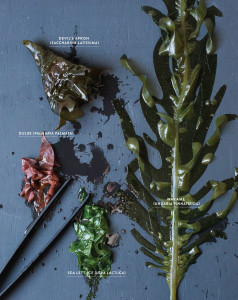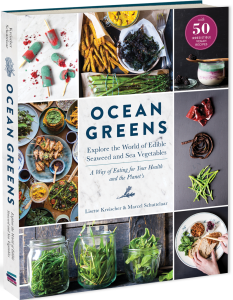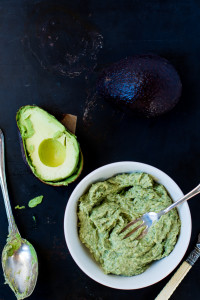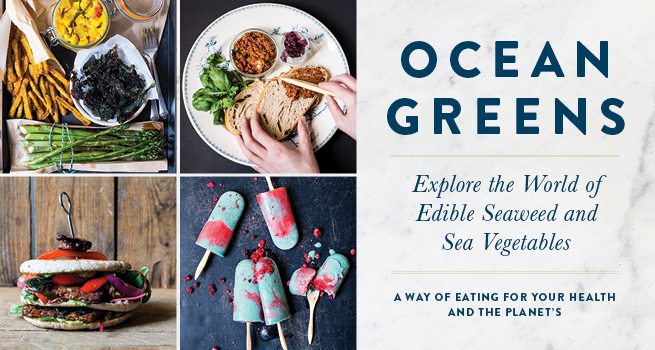 In these increasingly vegetarian-friendly times, you may feel like you’ve observed the whole spectrum of cuisine’s leafy green possibilities. From kale power salads to burritos wrapped in collard greens, getting your dose of daily veg is a lot easier, more creative and fun than it used to be back when a serving of vegetables was a scoop of defrosted peas next to mushy mashed potatoes. Yet there is one leafy vegetable we all could get to know a little better this year, and by the looks of 2017’s anticipated food trends, almost certainly will: Seaweed.
In these increasingly vegetarian-friendly times, you may feel like you’ve observed the whole spectrum of cuisine’s leafy green possibilities. From kale power salads to burritos wrapped in collard greens, getting your dose of daily veg is a lot easier, more creative and fun than it used to be back when a serving of vegetables was a scoop of defrosted peas next to mushy mashed potatoes. Yet there is one leafy vegetable we all could get to know a little better this year, and by the looks of 2017’s anticipated food trends, almost certainly will: Seaweed.
While seaweed is more commonly found in Asian cuisines, the rising interest in healthy eating in the U.S. has made seaweed more popular due to its unique health benefits. Seaweed is packed with vital nutrients like Vitamins A, B, and C, iron, zinc, magnesium, iodine (its most treasured nutrient), and soluble fiber, just to name a few. As the folks at Best Health point out, soluble fiber can help the digestive system take it slow, keeping you fuller for longer. And with as much protein as some legumes and virtually no calories, for those looking to lose weight, seaweed puts a whole new meaning to the “super” in “superfood.” According to Katherine Brooking at WebMD, some research shows that it might even quell hunger. Add the fact that some studies claim seaweed might be the secret to the shockingly low rate of breast cancer incidence in Japan, and it’s no wonder the seaweed bandwagon continues to grow.
As if the incredible benefits seaweed provides for your health weren’t enough, the sea gods also bestowed another amazing power on this outstanding ocean green: environmental-friendliness. Most crops are farmed on land where fresh water—an increasingly precious resource—is inevitably outsourced, but seaweed thrives in the salty water already in abundance all over the world. It even absorbs carbon from the sea, which helps fight global warming. Delicious, nutritious and sustainable? Never has there been a more guilt-free thing to eat.

There are thousands of types of seaweed—green, red, and brown varieties, some more edible than others and with different levels of difficulty in preparation. From wakame to the ever-popular nori that wraps everyone’s beloved sushi—the possibilities are endless. So how can you, a seaweed novice, learn how to incorporate this extraordinary superfood into your diet? That’s where Lisette Kreischer’s cutting-edge book, Ocean Greens, comes in.
Kreischer is an avid seaweed connoisseur with a knack for sea green cooking. In this book, she walks you through, in detail, all of seaweed’s amazing nutritional benefits as well as the secrets to its cultivation. In addition, 50 scrumptious, fun and accessible 100% vegan recipes await you. Warm up with some “Wakame Noodles and Spicy Tofu” or stock up on some “Sailor’s Butter” to give your morning toast a healthy seaweed kick. And in case you thought seaweed was for dinner only, think again. Kreischer’s seaweed sweet treats are truly crave-worthy–from “Spirulina & Strawberry Popsicles” to “Easy Chlorella Ice Cream,” you’ll be able to indulge in sweets you know are not just tasty, but also healthy. Best of all, these recipes come with helpful tips on how to prepare, cook and experiment with these ocean veggies, turning you into a seaweed aficionado in no time.
Good for your health and the planet’s––what more could we ask for? Get a jump on this year’s food trends and grab your copy of Ocean Greens today!
And to help make up your mind, here’s a sample recipe from the book to try yourself!

These days, the grilled vegetable and hummus sandwich has become a staple on many menus, and there are thousands of varieties of hummus. What’s more, making it is foolproof! Beet hummus, white bean hummus, avocado hummus—anything is possible, and now you can add spicy seaweed to the list!
• 0.14 ounce (4 g) dried sea lettuce
• One 15-ounce (425 g) can chickpeas
• 1 avocado, sliced
• 1¼ cup (20 g) fresh cilantro
• 2 small garlic cloves, minced
• 3 tablespoons extra virgin olive oil
• 3 tablespoons lime juice
• 2 tablespoons coconut milk
• 2 tablespoons white tahini
• 1 tablespoon Thai green curry paste (or 2 tablespoons for extra spiciness)
• Fine sea salt and freshly ground black pepper, to taste
1. Soak the sea lettuce according to the instructions on the package. Drain and thoroughly pat dry.
2. Drain the chickpeas. Place them in a food processor along with the rest of the ingredients except for the salt and pepper and pulse until smooth. Carefully taste and season with salt and pepper.
3. Store the hummus in an airtight container in the fridge; it will keep for at least four days.
Recipe from Ocean Greens: Explore the World of Edible Seaweed and Sea Vegetables by Lisette Kreischer and Marcel Schuttelaar. © Kosmos Uitgevers Utrecht/Antwerpen 2015, 2016. Translation © Marleen Reimer and Victor Verbeek, 2016. Available wherever books are sold. experimentpublishing.com
Ocean Greens is available now wherever books are sold.



